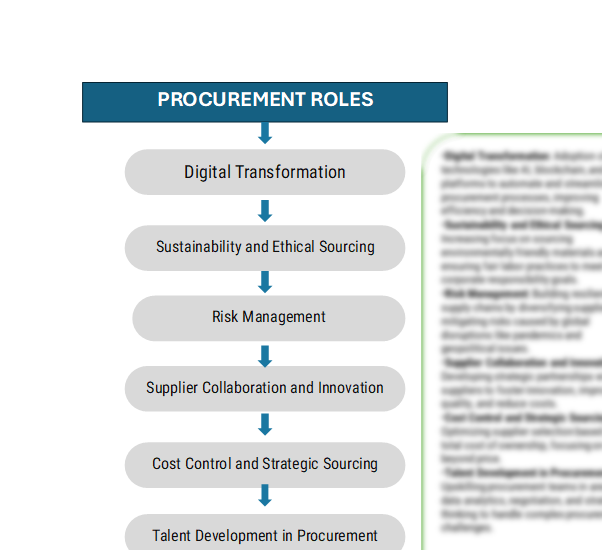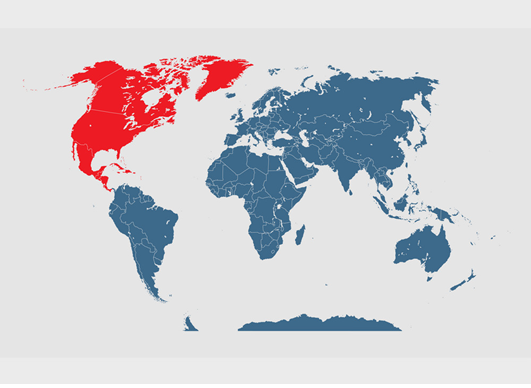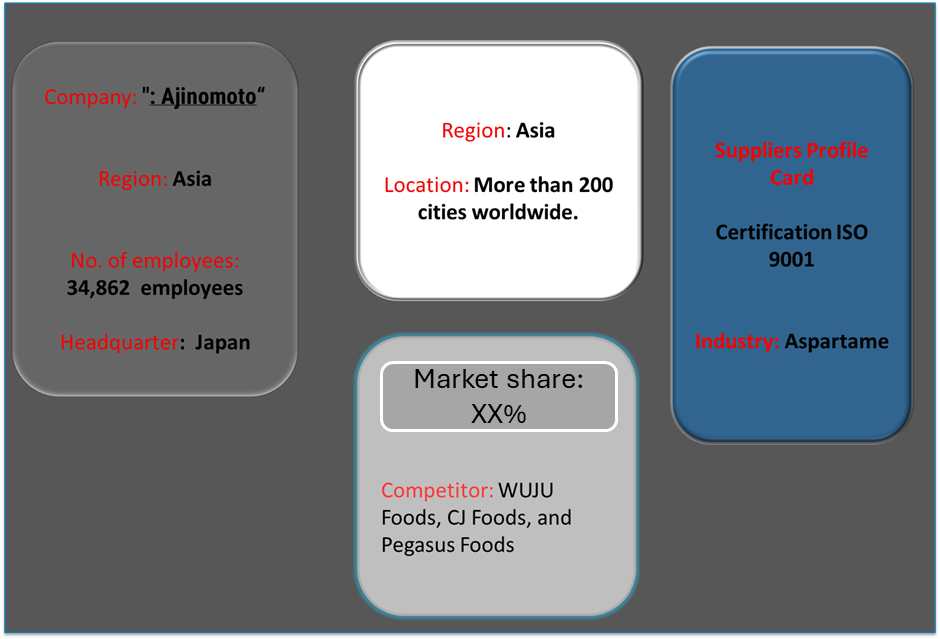Summary Overview
Academic Research Market Overview
The global academic research market is experiencing a transformative shift driven by technological advancements, a heightened emphasis on research and development (R&D), and an increasing demand for innovative solutions across diverse disciplines. This dynamic market benefits from robust investments from both public and private sectors in education and research initiatives. Our report offers an in-depth analysis of emerging procurement trends, highlighting cost-saving opportunities through multi-institutional subscriptions and the transition to open-access platforms. We also address future procurement challenges and underscore the critical role of digital procurement tools in accurately forecasting market needs, ensuring clients stay ahead in this evolving landscape. . Additionally, we address future procurement challenges and emphasize the importance of digital procurement tools in accurately forecasting market needs to keep clients ahead in this dynamic landscape. Strategic sourcing and procurement management play a crucial role in streamlining the procurement process for research development. As competition intensifies, companies are leveraging market intelligence solutions and procure analytics to optimize their supply chain management systems.
The outlook for the academic research market is optimistic, with several key trends and projections indicating robust growth through 2032:
-
Market Size: The global academic research market is expected to reach approximately USD 490 billion by 2032, reflecting a compound annual growth rate (CAGR) of about 5.5% from 2024 to 2032.
Growth rate: 5.5%
-
Sector Contributions: Growth is primarily driven by:
-
Higher Education: Increasing university and college enrolments are elevating demand for research funding and resources. -
Corporate R&D: Companies are increasingly investing in academic partnerships for collaborative research and innovation, particularly within technology and pharmaceuticals.
-
Technological Transformation and Innovations: Advances in digital tools and data analytics, including AI-driven data processing and innovative research methodologies, are enhancing the accuracy and speed of academic research. In addition, supplier performance management and vendor performance assessment are becoming critical for institutions and organizations in this competitive landscape, as they seek to ensure high standards of research quality, efficiency, and collaboration. These technological advancements are driving a shift toward more streamlined and impactful research processes, enabling quicker access to insights and improved decision-making across academic and research institutions.
-
Funding Initiatives: An upward trend in government and private sector funding for research, especially in STEM fields, is stimulating market growth and fostering interdisciplinary studies. -
Regional Insights: While North America and Europe lead the market, the Asia-Pacific region is anticipated to experience the most rapid growth due to an expanding educational infrastructure and increased R&D investments.
-
Collaborative Research Initiatives: The rise of partnerships between academia and industry is fostering innovation and enhancing knowledge transfer. -
Open Access Publishing: The movement towards open access publishing is democratizing research dissemination, facilitating broader access to findings. -
Interdisciplinary Research: A growing focus on interdisciplinary research is enabling comprehensive solutions to complex societal challenges.
Growth Drivers:
-
Government Policies: Initiatives and funding programs are propelling research growth and innovation across diverse fields. -
Technological Advancements: Advancements in research tools and platforms are enhancing efficiency and collaboration opportunities. -
Global Competition: The need for institutions to remain competitive in the global knowledge economy is driving investments in research capabilities. -
Public Engagement: Increasing public interest in scientific advancements is shaping funding priorities and institutional strategies. -
Digital Transformation: The ongoing digitalization of research processes is enhancing data management, analysis, and collaboration among institutions.
Overview of Market Intelligence Services for the Academic Research Market
Recent analyses reveal that the academic research market is experiencing escalating costs, primarily due to increased subscription fees and heightened demand for digital content. To navigate these financial pressures, market reports offer detailed cost forecasts and procurement savings opportunities. This information empowers educational institutions and researchers to effectively manage cost fluctuations while ensuring continued access to essential resources. By leveraging insights from these reports, stakeholders can implement strategies to mitigate expenses and optimize their procurement processes.
Procurement Intelligence for Academic Research: Category Management and Strategic Sourcing
To stay ahead in the academic research market, institutions and organizations are optimizing procurement strategies, leveraging spend analysis solutions for vendor spend analysis, and enhancing research supply chain efficiency through supply market intelligence. Procurement category management and strategic sourcing are becoming vital in achieving cost-effective procurement, ensuring timely availability of essential resources such as research materials, equipment, and services. These strategies are critical for managing budgets effectively and supporting the continuous development of groundbreaking research projects across various academic fields.
Pricing Outlook for Academic Research Market: Spend analysis
The academic research market is currently navigating a complex pricing landscape characterized by a steady upward trajectory in costs. This increase is fuelled by escalating subscription fees for research databases, surging demand for digital content, and continuous investments in research infrastructure.
The graph shows a general upward trend in pricing for academic research, likely due to rising costs, increased complexity, and growing demand. However, there may be fluctuations influenced by economic conditions, technological advancements, and competitive dynamics.
Comprehensive Price Forecast:
Our advanced analysis reveals a sustained growth trajectory driven by several key factors, including rising funding, increasing student and researcher populations, and the integration of artificial intelligence in research practices. We anticipate a robust year-on-year growth rate, reflecting ongoing investments in interdisciplinary research and commercialization efforts.
As the focus on healthcare innovation intensifies and global collaboration expands, stakeholders can expect not only lucrative opportunities but also heightened competition. Our insights highlight procurement strategies that can mitigate cost increases, enabling institutions to leverage savings on research materials, software, and publishing services effectively. By adopting a proactive procurement approach, organizations can navigate these challenges and secure their place in the evolving academic landscape.
Cost Breakdown for the Academic Research Market: Total Cost of Ownership and Cost saving opportunities- Research Materials (45%)
- Description: Encompasses subscription fees for academic journals, database access, books, and various digital content.
- Trends: A noticeable increase in journal subscription prices and licensing fees, necessitating strategic procurement initiatives to secure cost-effective agreements.
- Labor (XX)
- Description: XX
- Trends: XX
- Publishing Services (XX%)
- Description: XX
- Trends: XX
- Infrastructure & Overheads (XX%)
- Description: XX
- Trends: X

Supply and Demand Overview of the Academic Research Market: Demand-Supply Dynamics and Buyer Intelligence for Effective Supplier Relationship Management (SRM)"
The academic research market is growing due to increased funding, open-access, and AI advancements. Demand is high in healthcare, environment, and tech, supported by universities and corporate partnerships.
Demand Factors:
-
Increasing Enrolments: A surge in student populations amplifies the need for comprehensive academic resources. -
Escalating Research Funding: Enhanced funding levels directly correlate with a heightened demand for research output and capabilities. -
Emphasis on Research Excellence: Institutions are committed to producing high-quality research, fostering a competitive academic environment. -
Digital Transformation: The shift towards online platforms significantly boosts demand for accessible journals and databases.
Supply Factors:
-
Varied Publishing Models: A range of options, from traditional to open-access publishing, caters to diverse institutional needs. -
Technological Innovations: Cutting-edge advancements facilitate improved access to essential research tools and resources. -
Global Collaboration: Strategic partnerships enhance the availability and diversity of academic materials across borders. -
Market Competition: Increased competition among publishers promotes quality enhancements and more favourable pricing structures.
Regional Demand-Supply Outlook: Academic Research
The image shows growing demand for academic research in both North America and Asia, with potential price increases and increased competition.North America: Dominance in the Academic Research Market
North America, particularly the U.S. and Canada, asserts unparalleled dominance in the academic research market, characterized by:
-
Preeminent Institutions: Renowned universities like Harvard and MIT lead in groundbreaking research output, setting high standards in academic excellence. -
Robust Financial Ecosystem: Strong financial backing from government bodies (e.g., NIH, NSF) and lucrative private sector partnerships propel innovative research initiatives. -
Intensive Subscription Investments: Institutions prioritize extensive investment in journal and database subscriptions, ensuring researchers access essential resources for cutting-edge findings. -
Pioneering Research Dynamics: A focus on interdisciplinary collaboration in emerging fields, such as AI and biotechnology, amplifies research quality and relevance. -
Global Research Leadership: Strong international partnerships empower North America to influence global research trends and standards, making it a pivotal market for stakeholders seeking strategic advantages.

Supplier Landscape: Supplier Negotiations and Strategies
The supplier penetration in the academic research market is substantial, with a growing number of global and regional players contributing to the provision of research materials, equipment, and services. These suppliers play a crucial role in the overall market dynamics, impacting pricing, innovation, and accessibility of resources. The market is highly competitive, with suppliers ranging from large scientific equipment manufacturers to specialized providers offering niche research solutions.
Currently, the supplier landscape is characterized by significant consolidation among top-tier scientific equipment and materials companies, which dominate the market share. However, emerging startups and specialized firms are also expanding their footprint by focusing on innovative research tools, software solutions, and specialized materials catering to specific academic disciplines.
Some of the key suppliers in the academic research market include:
- Elsevier
- Siemens Healthineers
- Agilent Technologies
- PerkinElmer
- Bio-Rad Laboratories
- Illumina, Inc.
- Merck Group
- Danaher Corporation
- Abbott Laboratories
- Becton, Dickinson and Company (BD)

Procurement Attribute/Metric |
Details |
Market Sizing |
The academic research market is projected to grow from USD 87.50 billion in 2024 to USD 490 billion by 2032, with a CAGR of 5.5% (2023-2032). |
Research Technology Adoption Rate |
60% of academic institutions are integrating advanced technologies like AI-driven data analysis, virtual labs, and cloud computing for enhanced research efficiency. |
Top Research Strategies for 2024 |
Focus on interdisciplinary collaboration, increased reliance on digital tools, funding diversification, and open-access publishing. |
Research Process Automation |
40% of academic research processes, including data collection and analysis, have been automated across leading institutions. |
Research Challenges |
Key issues include limited funding, rising publication costs, ethical concerns in AI-driven research, and lack of infrastructure in developing regions. |
Key Suppliers |
Leading providers include Elsevier, Springer Nature, Taylor & Francis, Wiley, and ProQuest, offering tools for research publishing, data access, and analytics. |
Key Regions Covered |
North America, Europe, Asia-Pacific, and Rest of the World, with the U.S., U.K., China, and India as major hubs for academic research activities. |
Market Drivers and Trends |
Growth driven by government funding initiatives, increased demand for STEM research, and the rise of open-access platforms. Notable trends include AI-powered research platforms, collaborative cloud-based tools, and sustainable research practices. |








